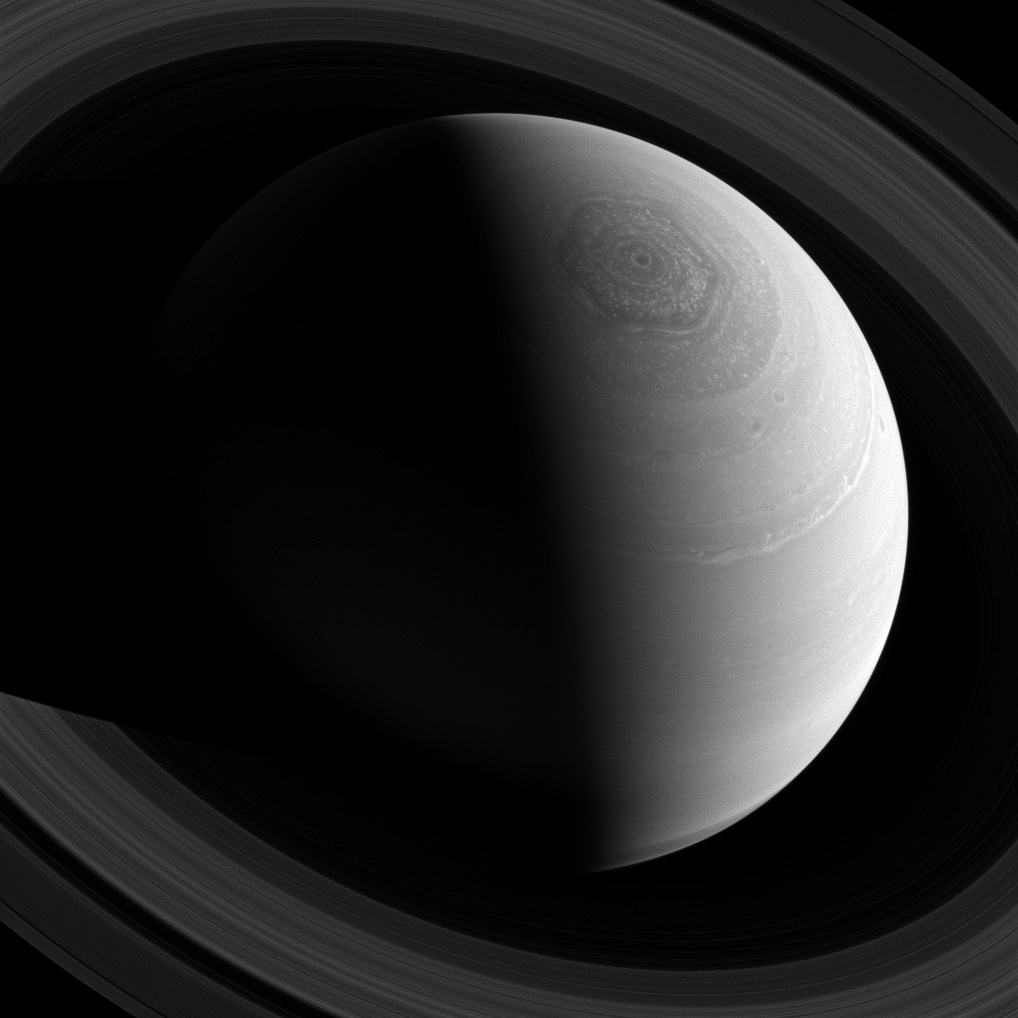The Cassini mission to Saturn released this new image of Saturn’s hexagon and rings on February 3, 2014, taken as the probe flew 1.6 million miles (2.5 million kilometers) above the ringed planet.

Saturn’s hexagon is a weather feature on Saturn, variously said to be a polar vortex or storm or a jet stream, at its north pole. It is so big that two Earths could fit easily, side by side, within its length of about 20,000 miles (about 30,000 km). Saturn’s hexagon has been spinning for years. It looks exactly the same as it did when it was first spotted by NASA’s Voyager 2 space probe in 1981.
Ciclops – the Cassini Imaging Central Laboratory for OPerationS (place where Cassini images are processed for release to the public) wrote:
Just as Saturn’s famous hexagonal shaped jet stream encircles the planet’s north pole, the rings encircle the planet, as seen from Cassini’s position high above. Around and around everything goes!
This view looks toward the sunlit side of the rings from about 43 degrees above the ringplane. The image was taken with the Cassini spacecraft wide-angle camera on Nov. 23, 2013 using a spectral filter that preferentially admits wavelengths of near-infrared light centered at 752 nanometers.
The view was obtained at a distance of approximately 1.6 million miles (2.5 million kilometers) from Saturn and at a Sun-Saturn-spacecraft, or phase, angle of 97 degrees. Image scale is 93 miles (150 kilometers) per pixel.

Bottom line: New image of Saturn hexagon at the planet’s north pole, taken by Cassini spacecraft, which has been orbiting Saturn since 2004.











